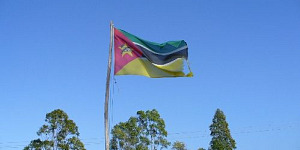Mozambique's central bank lowered its new monetary policy interest rate (MIMO) by a further 50 basis points to 21.0 percent and cut its required reserve ratio for banks by a further 100 points to 14.0 despite a high risk of inflationary pressure.
The Bank of Mozambique (BM) has now cut its new policy rate by 75 basis points since April when it was launched at 21.75 percent. The previous benchmark rate, the standing facility rate, was cut by 50 basis points.
BM has now cut the reserve ratio on local and foreign currency liabilities by a total of 150 basis points this year following a 50 point cut in April, with the new rate in effect from Nov. 7.
Today's rate cut primarily was aimed at aligning the monetary policy stance with the outlook for inflation, which has been steadily declining all year and is expect to be in single digits by December.
In September Mozambique's inflation rate fell to 10.76 percent from 14.35 percent in August, and was down from a 2017-high of 21.57 percent in March.
However, BM also said there was increasing evidence that some of the risks it had previously identified were materializing, justifying continued prudence in monetary policy, with the continued freeze of foreign aid requiring additional fiscal adjustment and faster reforms to boost the economy, which is continuing to slow down.
Growth in the second quarter rose slightly to 3.0 percent year-on-year from 2.9 percent in the first quarter but this remains below 5.0 percent in the second quarter of 2016 and well below the historical average of 7.0 percent, BM said.
Data from August also point to a deterioration of the economic climate index for the second consecutive month, BM said.
Public debt is also continuing to rise, BM noted, illustrating the difficulties of mobilizing funds to finance short- and medium-term budgets in the absence of direct external support.
Mozambique's economy has been hit by several severe blows in recent years, leading to a sharp fall in the exchange rate of its metical currency.
On top of a decline in global commodity prices, including coal, the government hid almost US$1.4 billion of debt, the equivalent of 10 percent of its Gross Domestic Product. This led to foreign donors, including the International Monetary Fund, to withdrew funding to the country.
The metical hit record lows of around 78.5 to the U.S. dollar in October 2016 but has firmed since then, helped by central bank rate hikes and rising commodity prices.
Since late May the metical has been steady, helping curb inflation, and was trading at 60.7 to the U.S. dollar today, up 17.3 percent this year.
As of Oct. 20, Mozambique's reserves had risen to US$2.514 billion, enough to cover 6.1 months of imports, excluding large projects.






































